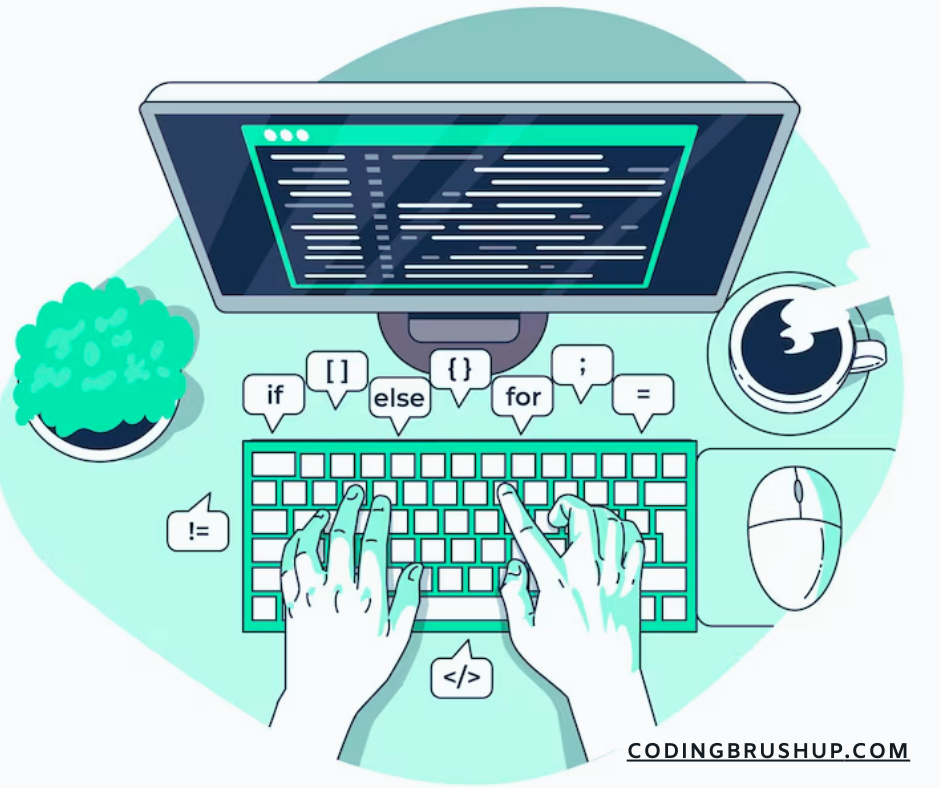Programming News
Infoq
136

Image Credit: Infoq
Java News Roundup: OpenJDK JEPs, Hibernate Reactive, Infinispan, JHipster, Gatherers4j
- This Java news roundup covers OpenJDK JEPs, Hibernate Reactive, Infinispan, JHipster, and Gatherers4j.
- Two JEPs, JEP 513 and JEP 505, have been targeted for JDK 25, focusing on Flexible Constructor Bodies and Structured Concurrency.
- Three JEPs elevated to Proposed for JDK 25 include Key Derivation Function API, Vector API, and Scoped Values.
- JEP 518 advances to Candidate status, aiming to enhance JDK Flight Recorder stability by sampling Java thread stacks.
- JEP 516, proposing object caching with any garbage collector, moves to Candidate status for improved startup performance.
- For JDK 25, there are nine significant JEPs, including Stable Values, Scoped Values, and Compact Source Files.
- The JDK 25 early-access Build 22 brings fixes and updates to enhance the upcoming release version.
- Updates in JNoSQL 1.1.7 focus on bug fixes and enhancements, offering support for new ValueReader implementations.
- Quarkus 3.22.2 release addresses bug fixes, including improvements in handling Jakarta RESTful Web Services annotations.
- Hibernate Reactive 3.0.0 RC1 delivers JReleaser support, new interfaces, and methods, aligning with Jakarta Persistence standards for improved flexibility.
Read Full Article
8 Likes
Eu-Startups
86

London-based startup Zendo Energy raises €2 million to help data centres decarbonise and adapt to AI boom
- London-based startup Zendo Energy has secured €2.07 million in pre-Seed funding to develop an 'Energy OS' platform for data centers to adapt to AI workloads and volatile energy markets.
- The funding round was led by Fly Ventures, with participation from Octopus Ventures, Pact VC, and angel investors from the data center industry.
- Zendo Energy aims to help data centers become more efficient and ready for the future of computing demand by offering predictive analytics and flexible energy solutions.
- Founded in 2024 by Jade Batstone and Drew Barrett, Zendo brings over two decades of experience in renewable energy and B2B software to the data center industry.
- The platform by Zendo Energy can save data centers up to 25% in energy costs and simplify the integration of renewable energy sources into their power mix.
- With the rise of AI, cloud computing, and streaming services, global electricity demand from data centers is projected to double by 2030, posing challenges for decarbonization.
- Zendo's AI-powered software enables data centers to analyze usage patterns, forecast demand, and secure customized energy tariffs, ultimately maximizing existing infrastructure value.
- The startup's mission is to decarbonize computing power and support data centers in becoming more efficient and sustainable partners in the clean energy transition.
- Zendo addresses challenges faced by data centers in planning for energy demands driven by AI workloads and aims to make operations greener, more efficient, and profitable.
- Investors like Octopus Ventures and Fly Ventures believe in Zendo's potential to revolutionize data center operations and drive a shift towards more sustainable and profitable practices.
Read Full Article
5 Likes
Testim.io
109

Protractor Testing: A Brief History and Its Relevance Today
- Protractor was a test framework primarily for end-to-end testing in Angular and AngularJS applications but can also be used for non-Angular websites.
- As of August 2023, Protractor has reached its end-of-life, and its use is discouraged due to the evolution of JavaScript and modern testing frameworks.
- Protractor was created in 2013 by the Angular team to enhance Angular's E2E testing capabilities and address limitations in existing testing tools.
- It functioned as an open-source framework for performing E2E testing on Angular apps, integrating NodeJS, Jasmine, Selenium, and more.
- Protractor used an actual browser to simulate user behavior, enabling end-to-end testing starting at the UI level and covering all layers of an application.
- Protractor's architecture included components like WebDriverJS, Jasmine (or Mocha/Cucumber), Selenium Server, and supported browsers like Chrome and Firefox.
- End-to-end testing ensures an application's workflow functions seamlessly, simulating real user interactions across frontend, backend, and database layers.
- With the dominance of frameworks like Angular and React, E2E testing plays a vital role in validating the entire user experience in modern web applications.
- In April 2021, the Protractor team announced the plans to end its development due to advancements in JavaScript and testing frameworks, leading to its deprecation.
- Existing Protractor users are encouraged to migrate to more modern testing solutions like Testim Automate for efficient and maintainable test suites.
Read Full Article
6 Likes
RealPython
319

Image Credit: RealPython
Python's T-Strings Coming Soon and Other Python News for May 2025
- Python will soon have template strings, or t-strings, included in the next release, providing a new mechanism for defining string templates.
- PEP 750 introduces template strings as structured objects, allowing separate definition of string structure from data used to populate it.
- Python 3.14 development continues with a new alpha release (3.14.0a7) focusing on fixes and tweaks as it moves towards stabilization for the first beta.
- Various PEPs accepted or proposed for Python 3.14 indicate developments in debugging, dependency management, and type checking.
Read Full Article
19 Likes
Discover more
- Software News
- Web Design
- Devops News
- Open Source News
- Databases
- Cloud News
- Product Management News
- Operating Systems News
- Agile Methodology News
- Computer Engineering
- Startup News
- Cryptocurrency News
- Technology News
- Blockchain News
- Data Science News
- AR News
- Apple News
- Cyber Security News
- Leadership News
- Gaming News
- Automobiles News
Dev
369

Image Credit: Dev
I Installed Omakub Five Times So You Can Do It Just Once
- Omakub is a tool to turn a fresh installation of Ubuntu 24.04 into a friendly system for developers new to Linux.
- Linux is a great system, and Ubuntu is a fantastic distribution to start with due to its ease of installation and setup.
- The article is intended for developers new to Linux, offering a bootstrapped setup to quickly get started with the system.
- Optional directions are included for setting up VNC to connect to a remote desktop in the cloud with Hetzner.
- Initial system setup involves updating packages, installing Gnome, creating a new user, and configuring for X11.
- Installing and configuring TigerVNC on the server includes setting the VNC password and startup scripts.
- Connecting to the VNC server can be done using various VNC clients like Jump Desktop, RealVNC Viewer, or TigerVNC Viewer.
- Installing Omakub is a simple process by running a single command to install and set up your preferred tools on Ubuntu 24.04.
- Omakub provides an easy way for users to quickly evaluate Linux without spending time on setup and configuration.
- For further guidance on using Omakub, users can refer to resources like the video from DHH on the Omakub website or The Omakub Manual.
Read Full Article
22 Likes
Medium
50

Making .fullScreenCover Transparent in SwiftUI Using UIViewRepresentable
- SwiftUI's .fullScreenCover by default uses an opaque background managed by UIKit's modal container.
- To make .fullScreenCover transparent, SwiftUI lacks a native option, so a UIViewRepresentable is used to set the background color to .clear.
- Common SwiftUI methods like .background(Color.clear) or ZStack only affect modal content, not the background container itself.
- Although relying on SwiftUI's internal view hierarchy, this workaround is an effective way for achieving a transparent .fullScreenCover in SwiftUI 6.
Read Full Article
3 Likes
Dev
127

Image Credit: Dev
How to Handle File Uploads with Node.js and Express - Multer Edition
- This article discusses how to handle file uploads with Node.js and Express using Multer.
- Multer offers flexibility with disk & memory storage engines, file filtering, limits, validation, and streaming support.
- To start, Node.js needs to be installed, along with basic JavaScript and Express knowledge.
- The tutorial covers setting up an Express project, installing dependencies like Multer, node-fetch, and form-data.
- It includes frontend setup for file selection and backend processing for file uploads and malware scanning.
- The article provides code snippets for creating routes, handling file uploads, and scanning for malware using Verisys Antivirus API.
- Testing instructions are included for both file uploads and malware scanning functionalities.
- The tutorial ensures proper setup for handling file uploads with Node.js and Express using Multer.
- Overall, it guides users through creating a file upload system with advanced features using Multer middleware.
- The complete code for this tutorial can be found on GitHub at the provided link.
Read Full Article
7 Likes
Medium
334

Image Credit: Medium
Coding Smarter, Not Harder: Why Coding Brushup Is a Developer’s Power Tool
- Coding Brushup is a developer’s power tool designed to help code smarter, not harder by providing tools, resources, and guidance for all skill levels.
- Coding Brushup offers curated learning resources, emphasizing clean code practices, and providing interactive challenges to reinforce skills.
- The platform includes time-saving features like code snippet libraries and debugging tips to help developers work more efficiently while maintaining quality.
- Coding Brushup offers real-world scenarios, structured learning paths for all levels, and a supportive community to foster peer learning and professional growth.
Read Full Article
20 Likes
Dev
291

Image Credit: Dev
🚀 Top 10 Best Git GUI Clients for Developers: Unleash Your Git Power! 💥
- Git GUI clients offer a simpler, faster, and visually appealing alternative to the command line for managing code efficiently.
- GitHub Desktop is recommended for beginners and GitHub users who prefer simplicity, offering easy clone and commit management.
- Sourcetree provides advanced Git features with a user-friendly interface, ideal for developers needing more control over workflows.
- GitKraken stands out for its visual appeal with interactive commit graphs, issue tracking tools, and Git LFS support.
- Git Extensions caters to advanced users seeking customization options and full command support in a graphical interface.
- TortoiseGit is a lightweight Windows client integrated into Windows Explorer, suitable for Windows users looking for simplicity.
- SmartGit is a versatile option supporting multiple version control systems like Git, Mercurial, and Subversion, offering a customizable interface.
- Git Cola is praised for its speed and minimalistic design, making it an efficient choice for a lightweight Git GUI.
- Tower is a premium Git client with advanced features like cherry-pick, stash management, and elegant interface, ideal for professionals.
- GitHub Desktop for Windows is tailored for GitHub users, providing quick access to repositories and simplified workflows.
Read Full Article
17 Likes
Dev
154

Image Credit: Dev
How to Calculate FID Score for Single-Channel MNIST Images?
- The Fréchet Inception Distance (FID) score is crucial for evaluating the quality of generated images in GANs but typically requires RGB images, posing a challenge for single-channel images like those in the MNIST dataset.
- To compute the FID score for single-channel MNIST images, one must convert them to three-channel format by duplicating the single channel across the RGB channels.
- Steps to convert MNIST single-channel images to three channels include importing necessary libraries, loading the dataset, normalization, and using TensorFlow for FID score calculation.
- Converting MNIST single-channel images to RGB format enables effective FID score computation, allowing better evaluation of GAN models and adherence to metric requirements.
Read Full Article
9 Likes
Dev
432

Image Credit: Dev
Building a Multi-Step HTML Form with Real-Time Validation and Custom Styling
- Advanced forms are essential for user flows, UI components, and accessibility in web development.
- The tutorial covers building a multi-step HTML form with real-time validation and custom styling.
- It includes setting up HTML structure, CSS for styling, and JavaScript for navigation and validation.
- Multi-step forms enhance usability, engagement, and completion rates by simplifying data entry processes.
Read Full Article
26 Likes
Dev
110

Image Credit: Dev
Why Python’s zip() Is More Powerful Than You Think
- Python's zip() function is a powerful tool that pairs elements from multiple iterables together.
- It allows for easy pairing of lists, dealing gracefully with uneven lengths by dropping extras.
- Zip() can also be used to unzip previously zipped lists and create tools for various tasks like transposers and CSV readers.
- Its simplicity and elegance make it a valuable asset in Python for tasks like dictionary creation and parallel iteration.
Read Full Article
6 Likes
Medium
176

Image Credit: Medium
We’re Writing Code Faster Than Ever — But Who’s Using It?
- The gap between producing software at a fast pace and its actual adoption is a significant challenge in today's tech landscape.
- Real software consumption involves more than just acquiring licenses or subscriptions; it extends to how effectively and seamlessly software is integrated into human and organizational processes.
- Implications for the market structure include the need for minimal adoption friction, focusing on consumption metrics for success evaluation, and creating pathways for gradual transformation.
- To address the production-consumption gap, organizations are advised to develop evaluation frameworks, prioritize integration capabilities, and enhance organizational adoption competency.
Read Full Article
4 Likes
Medium
173

Image Credit: Medium
Makefiles are older than Doom why are we still using them?
- The use of 'make', an ancient build tool, is questioned in modern software development despite its historical significance and prevalence in numerous projects.
- Make's syntax, characterized by intricate rules and the need for precise indentation, has made it a challenging tool to work with.
- While modern alternatives like CMake exist, they often still rely on 'make' underneath the surface, maintaining its grip on certain development environments.
- Although considered fragile and outdated, 'make' continues to be deeply embedded in various systems, especially in academia and monorepos.
- Usage of 'make' persists due to its ubiquitous presence and simplicity in smaller projects, CLI tools, and legacy codebases.
- Despite its limitations, 'make' remains a reliable choice for quick and efficient build setups without the overhead of complex configurations.
- Modern development tools are aiming to surpass 'make' by offering better syntax, clearer documentation, and improved developer experiences.
- The future of build systems may involve smart, context-aware tools that reduce manual efforts and improve productivity for developers.
- Devs are seeking advancements in build tools that are more declarative, user-friendly, and automated, enhancing the efficiency of the build process.
- While 'make' still has its place in certain scenarios, the evolution of build systems is inevitable, with a focus on creating tools tailored for modern development needs.
- Ultimately, the choice of build tool depends on the specific requirements of each project, aiming to maintain efficient builds and developer sanity.
Read Full Article
10 Likes
Medium
273

Image Credit: Medium
Deconstructing the Prompt: The Blueprint for Generating Future UX Articles with AI
- AI, especially Large Language Models (LLMs) like ChatGPT, is being increasingly utilized for content creation.
- Creating high-quality, specialized content with AI requires a meticulously crafted 'prompt' that serves as a blueprint for the AI interaction.
- The article delves into the author's experience in generating an article on 'AIUX and AIFirst Thinking' using a well-structured prompt.
- Professionals in AI, tech, UX, product development, marketing, and writing can gain insights on effectively leveraging AI through understanding the strategic prompt design.
Read Full Article
15 Likes
For uninterrupted reading, download the app